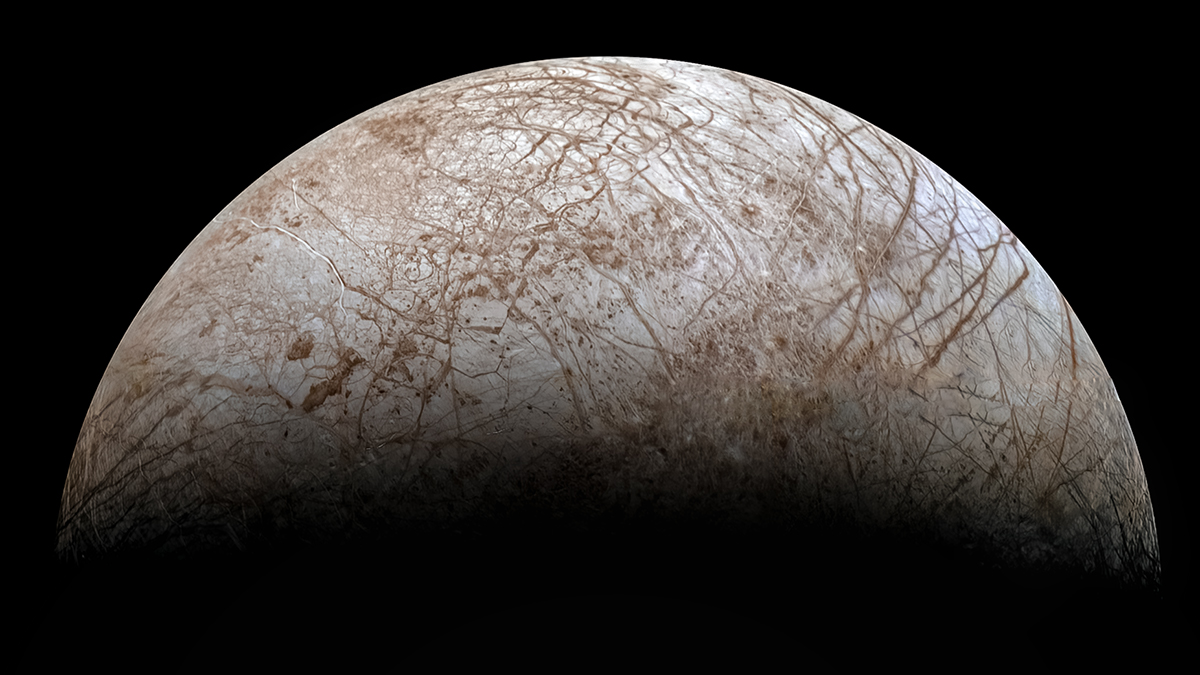Just like the Moon always points the same side toward Earth, Europa should always point the same side toward Jupiter. But theorists have debated for decades whether that’s always the case.
“A single point on Europa’s surface may drift relative to Jupiter over time,” said Hamish Hay, a planetary scientist at NASA Jet Propulsion Laboratory in Pasadena, Calif. Past research has attempted to measure this drift using data from the Voyager and Galileo spacecraft, which visited Jupiter 16 years apart, and tracking over time the locations of different surface features on Europa’s ice. “When accounting for this effect, it commonly improves the fit between observed and modeled tectonic features.”
The drift would likely be caused by tiny changes in how fast Europa rotates, a phenomenon that is not unheard of. On Earth, interactions between the ocean and the atmosphere can lead to minuscule changes in the length of a day. Venus’s heavy atmosphere exerts an even larger torque and also shifts the Venusian day. Europa has no atmosphere to tug it back and forth, but it does have an icy shell, floating atop a subglacial ocean, that sloshes around like a worldwide iceberg on a turbulent sea.
Hay and his colleagues modeled the extent to which Europa’s ocean dynamics can influence ice shell movement by calculating the drag the ocean exerts on the bottom of the ice. “If the ocean’s flowing to the east,” said Hay, “you’d expect the ice shell to also want to accelerate to the east due to that drag. If the ocean was then moving to the west, you’d expect the ice shell to decelerate as the ocean pulls against its own rotation.”
“Europa’s ocean, when heated from below and cooled from above, exerts lateral stresses at the ice-ocean interface.”
Preliminary results from models suggested that depending on the buoyancy of the water, the drag between the ocean and the ice could exert as much torque on Europan ice as tidal forces from Jupiter do. “Europa’s ocean, when heated from below and cooled from above, exerts lateral stresses at the ice-ocean interface,” Hay said. Each square centimeter of ice feels only a tiny bit of drag from the ocean, but when added up over the entire surface area of the moon, “that can result in a net torque on the ice shell, and the direction of that torque can reverse depending on how strong the ocean is being heated and cooled.” Hay presented these results in a prerecorded talk on 16 December at AGU’s Fall Meeting 2021.
The extent to which Europa’s ocean dynamics shift the ice shell depends on the ocean’s buoyancy, which itself depends on the ocean’s temperature. As the moon’s cooling core has dissipated heat through the water and as tidal forces from Jupiter have stretched and tugged the malleable moon, it’s possible that the ocean’s temperature has changed enough at some point in its history for that ice-ocean drag to have reversed course. “We can imagine a scenario where Europa’s thermal state is changing over time, perhaps due to orbital variations or changes in the amount of radioactive elements that have decayed,” Hay said. It’s possible that “the torque that the ocean exerts on the shell actually changes as a function of time.”
An Ocean of Unknowns
The researchers plan to explore how the torques on the ice shell change depending on the ice thickness, ocean salinity, and viscosity of the water—three big unknowns for Europa. “It’s possible that dissolved salts, which alter the density of water and therefore its tendency to rise or sink, may alter the way the ocean flows,” Hay explained via email.
Paul Hayne, a planetary scientist at the University of Colorado Boulder who has studied potential nonsynchronous rotation on Europa, called the results “very intriguing” and hopes to see future models also consider how internal heat influences ocean dynamics. “The fluid motions in Europa’s ocean are determined by the interior heat flow and the viscosity of the ocean water—both of these are highly uncertain,” Hayne said. Internal heat also affects the thickness of the ice shell. “Drag forces from Europa’s ocean can either prevent nonsynchronous rotation or speed it up” or be entirely unimportant. Hayne was not involved with this research.
Data from the upcoming Europa Clipper from NASA and the Jupiter Icy Moons Explorer (JUICE) from the European Space Agency also might pin down the thermochemical properties of the ocean and reveal their influence on the ice. “In terms of torques on the ice shell, geodetic measurements that determine the precise rotation of the ice shell could be very powerful,” explained Krista Soderlund, a planetary scientist at the University of Texas at Austin who was not involved with this research.
The missions will also help determine the ice shell’s thickness as well as ocean salinity. Magnetic induction measurements might offer a more direct probe of ocean circulation, Soderlund added, and seismic measurements might also reveal what moves beneath the ice.
—Kimberly M. S. Cartier (@AstroKimCartier), Staff Writer


